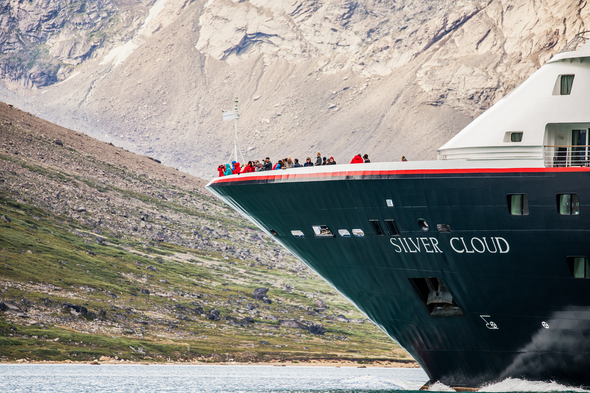An expedition cruise might well be at the top of your list. But with so many ships to choose from, how do you select the one for you? Your best bet is to talk through your preferences with the experts at Mundy Adventures - but to set you on the right road, here are five of the key features which we think are important...
1. Learning
Inquisitive travellers choosing to travel off the beaten track enjoy the opportunity to expand their knowledge whilst on holiday. Stimulating talks from knowledgeable and enthusiastic experts will make your trip all the more fascinating. To guarantee this is a totally enjoyable experience, there are going to be a range of features to look for.
First of all, your expedition team will comprise experts in a whole range of subjects, from marine life to photography, and from geography to climate change. Naturalists, explorers and more, what they all have in common is a passion and excitement for their subject, to ensure maximum enjoyment for those on board. Look for an excellent guest to expedition team ratio, a comfortable lecture theatre for presentations and seminars, a fantastic well stocked library, and a stimulating learning centre.

2. Viewing
When you're on board a conventional cruise, everything is about the ports of call. On an expedition cruise, however, you are going to be exploring, so your itinerary is fluid. The captain and expedition leader will search out the best wildlife and scenery, adjusting the route depending on local conditions. To make the most of your trip, you need the very best opportunities to watch out for these natural wonders. Essentials are plenty of deck space, including forward-facing indoor and outdoor space, and a bow accessible to passengers, ideally with a viewing platform. Other features might include glass-floored balconies and floor-to-ceiling windows.

3. Living
There is a valid argument that your cabin is for sleeping only, so it doesn't really matter what it's like. But we love floor-to-ceiling windows, and preferably a verandah, so you don't miss a thing. Binoculars will probably be provided, and bathrooms may have a heated wall for drying out your parka on a wet day. Good black-out curtains will help you sleep despite the 24-hour daylight in the polar regions.

4. Off the ship
You will be impatient to get off the ship for close-up encounters, though it's not all about going ashore. The more equipment the ship carries, the more you will get to see. Sturdy zodiacs will whisk you to the beach for wet landings and hikes, but they are also great for exploring the ice, or a secluded tributary or distant shore. Other equipment might include kayaks or stand-up paddleboards, or even submarines and helicopters to take you further afield. Look for speedy zodiac launching capabilities and marinas to reduce the time you spend queuing to leave the ship, and well designed mudrooms to speed up your return.

5. Sustainability
As you explore the wilderness areas of the planet, you want to be sure that you are not harming the pristine environments you are visiting. Check out the green credentials of each ship. Low carbon fuels and hybrid or low energy consumption engines are great, alongside design innovations to reduce the impact on the environment such as the Xbow, satellite positioning systems and more. Many ships have cold ironing capabilities, allowing them to link up to a shoreside power supply where appropriate.
As well as the technical capabilities, investigate also the operator's social responsibility initiatives, which may include charity links, investment in local communities, scientific research and more.



